AMD's Ryzen 9 6900HS Rembrandt Benchmarked: Zen3+ Power and Performance Scaling
by Dr. Ian Cutress on March 1, 2022 9:30 AM ESTPower Consumption
On AMD’s official specifications for the Ryzen 9 6900HS, it lists the TDP as 35 W: the same specifications as the 6900HX, but at an optimized TDP. The HS means that it can only be used in AMD-approved and codesigned systems that can get the best out of the unit: i.e. it is an ultraportable premium device. That being said, laptop vendors can customize the actual final power limit as high as 80W, with the idea that because they are using an optimized voltage/frequency binned processor, the laptop design that can dissipate that much can extract more sustained performance from the processor, this usually translates into a higher all-core frequency.
For our ASUS Zephryus G14, the standard default power profile, known as ‘Performance’, is meant to conform to AMD’s Power Management Framework, i.e. scale from Energy Saving to Performance as required. In this mode, the system has a sustained 45 W power draw.
Performance: 45W
Loading up a render like POV-Ray, the system spikes the CPU package power to 83 W and 80ºC, before very quickly coming down to 45 W and a slowly rising temperature to equilibrium at 87ºC.
With something a bit more memory heavy, such as yCruncher, the same power profile is shown, this time with the power around about 81ºC for most of the test because it spends more time on memory access than raw throughput.
For a real-world scenario, Agisoft also spikes up very high initially, before reaching a plateau at 45 W and 90ºC.
Turbo: 65W
The other option on offer for this system is the ‘Turbo’ Mode, which jacks everything up to 65 W sustained.
This means we hit the peak temperature limits quite quickly, and the system ramps down over time to the 65 W average power.
The yCruncher profile is a bit more varied due to the CPU performance going further while the memory performance staying the same, but we still see temperatures in the mid 90s and power hovering more around 75 W.
Agisoft’s Turbo profile is all about being temperature limited in this case, and we still end up in the sustained parts of the test around that 65 W value.
If we were to look at how the power was distributed in each mode:
In performance mode, we see 16.0 watts when one core is loaded, going down to 5.2 watts per core when all cores are loaded and a frequency of 3775 MHz.
Compare that to the Turbo Mode:
The single-core data is the same, nothing changes there, but we’re now up to 7.2 watts per core when fully loaded, and a much higher frequency at 4050 MHz. But this means we’re using 17 watts more power (or 38% more power) for only 275 MHz (a 7% gain).
Looking at the frequencies in this format, you can see a slight difference in performance, but seemingly not that much to justify the power difference. Then again, I suspect Turbo is only really for when you are fully charged and plugged into mains power anyway.
For the following benchmarks, we’re going to be using both Performance and Turbo modes, but also I put the CPU in a 35W power mode. As the 1 core and 2 core loading is below this, it shouldn’t affect the single-core performance that much, but it might give us an understanding of where it compares to previous generations.


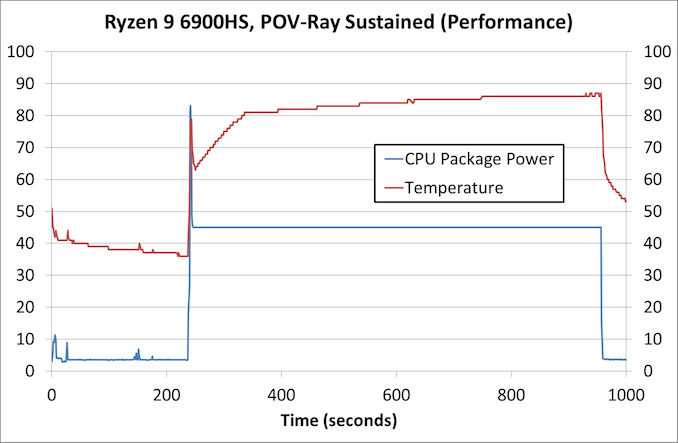
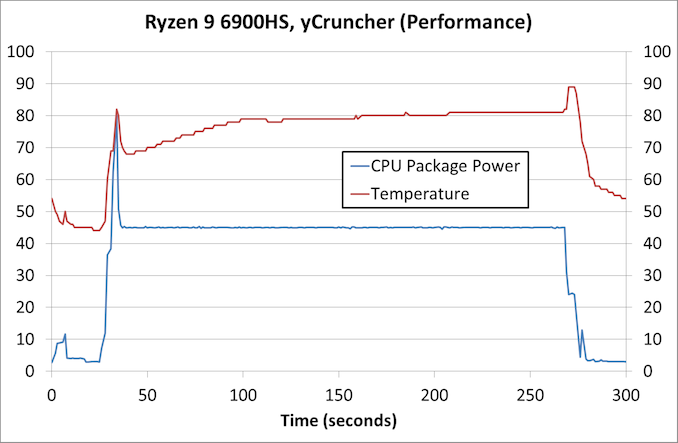
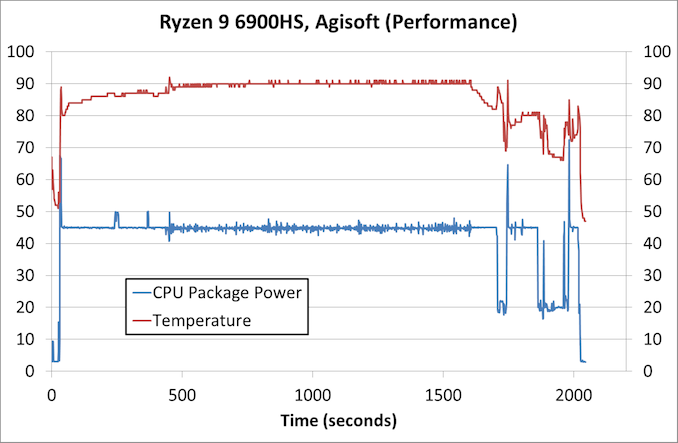

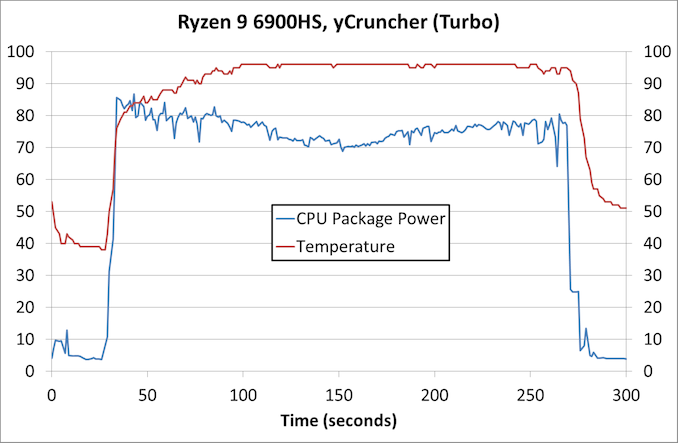
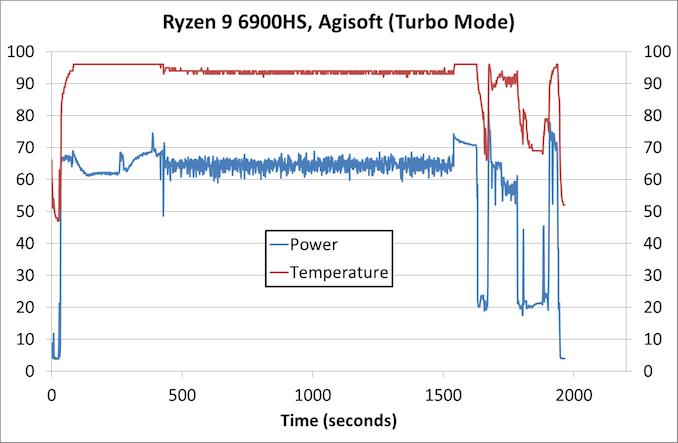
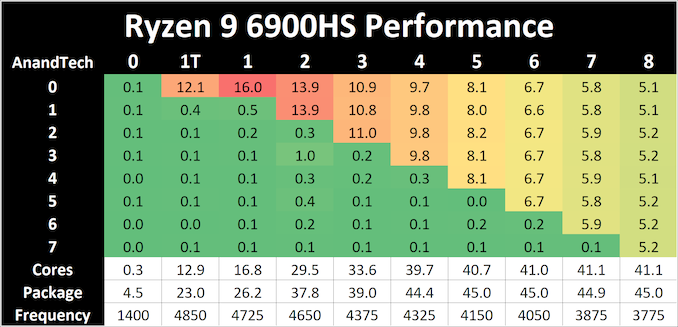
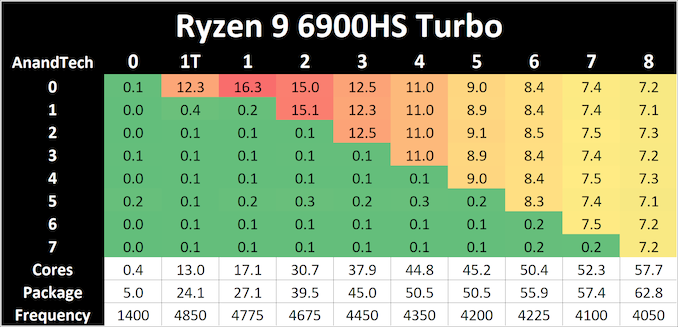









92 Comments
View All Comments
mode_13h - Tuesday, March 1, 2022 - link
> 3D Particle Movement v2.1> ...
> To keep things honest, AMD also has a copy of the code, but has not proposed any changes.
No, to keep things honest, you need to release the benchmark. All of your other benchmarks are publicly-available, but not this one.
Please open source it, or stop using it. Thanks.
isthisavailable - Wednesday, March 2, 2022 - link
So there are no battery life and iGPU results in a mobile processor review...right.mode_13h - Wednesday, March 2, 2022 - link
IMO, the article was long enough and had plenty to cover. I think it's not a problem, if those are reviewed separately, however it does make the overall comparison vs. Intel problematic.Anyway, we now know Ian was writing it on his way out the door, so that makes it at least understandable.
Stuka87 - Wednesday, March 2, 2022 - link
I am awaiting the day where Ryzens become more widespread in workstation class laptops. Very few machines had them when I had to upgrade this past summer, so had to go Intel. Which has been a bit lack luster.PlanetLockdownFilm - Wednesday, March 2, 2022 - link
Interesting read, buts seems like it depends on what offer you can find and what else the laptop has to give. RDNA2 is a plus though, if you're going for integrated graphics.WaltC - Wednesday, March 2, 2022 - link
I thought it was fairly interesting that although I looked for it, I could not find a description of the system used to supply the Intel numbers that were plugged into the charts used--if those specs are included and I missed them, then mea culpa. But if not, well, that's interesting...and I also found it very interesting that Intel was nowhere to be found/mentioned in the Performance Per Watt section...;)mode_13h - Thursday, March 3, 2022 - link
> I also found it very interesting that Intel was nowhere to be found/mentioned> in the Performance Per Watt section...;)
Exactly. What they did show was that Intel could/would scale up power consumption of its single-core performance higher than Zen 3+. What's not obvious is how much of Intel's performance advantage simply comes down to juicing their P-cores, at the expense of efficiency.
Dug - Friday, March 11, 2022 - link
I want to see how well each system does when not plugged in.m16 - Thursday, March 3, 2022 - link
Wow, I know what I'll be recommending for non desktop replacements.This specific laptop also perhaps helps a bit, that's how I'd expect other manufacturers to build their workhorses for decent cooling.
beginner99 - Friday, March 4, 2022 - link
Now AT isn't doing GPU tests on an APU. I mean really?